Text and photos: Katie Dubey
The ornate teak door opened. The maid stepped aside for me to enter the house. I lowered my eyes to cross the threshold and stopped in my tracks, my feet glued to the ground. The maid, baffled by this odd behavior looked quizzically at me. Mercifully, my friend stepped into the hall just then, saying “Hi. Come on in.”
“Is this floor meant for walking on?” I retorted, looking upon the sparkling patterned tiles in awe. She laughed mischievously saying, “Walk on your hands Kate, if you do not wish to tread on ancient heritage – 85 years plus flooring!” We both burst into laughter. Whistling softly under my breath, I gingerly stepped over the threshold and a visit to a friend’s home ended up as an initiation into the fascinating world of floor art. I could not get it off my mind. Patterned tiles swam across my vision ever so often and I decided to dig further.
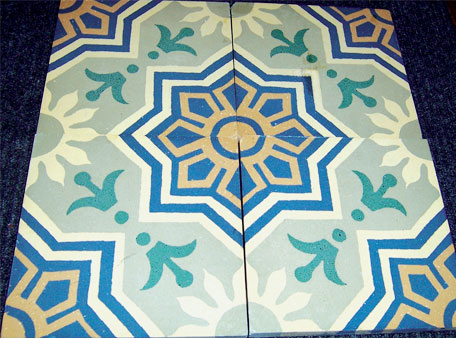
Cement, coloured pigments, water, time, an artist’s vision and an immense amount of patience is what it takes to make encaustic tiles. These were the very ingredients used by the Moors ten centuries ago to produce encaustic tiles, and the tiles were crafted by hand one at a time.
The legacy of the Moors
When the Moors invaded and conquered all of Spain and southern Portugal in the 8th century, they brought both the countries under the sway of Islam. A mingling of Moorish and Spanish cultures took place and its effect was deeply felt. The conquerors imposed upon the conquered, and the effect became visible in the architecture of the time. An extensive use of encaustic cement tiles on the walls of mosques and palaces in distinctive graphic floral and geometric patterns prevailed, and is still visible in Spain today.

The technique of making the encaustic cement tile was improved during the 19th century. The production technology and the cement itself developed and perfected in the course of time, but the basic method remained the same: Traditional and environmentally friendly, the tiles are made from cement and pressed over a design mould filled with colour pigment. They are then put under hydraulic presses and compressed, which transfers the pattern on to the cement, and they are finally cured. Although lengthy and time consuming, the final product is durable and beautiful. Cement tiles evolved into an art as the patterns gradually became more intricate and ornate.
Cement tiles first appeared in the 1850s in Catalonia and were exhibited in Paris at the International Exposition of 1867 by the Catalan company Garret and Rivet. They were produced and used since the late 19th century throughout the urbanised areas of England, France, Spain, Portugal and Italy and from thence, via British imports, they entered India.
India in the 1900s and the call to Swadeshi
By the 20th century, the British were well-entrenched in India. Having established their colonial rule, they systematically undermined Indian products and promoted English imports in the Indian markets. The encaustic tiles, being produced by Minton were brought to India as high end flooring material, and were used in several landmark buildings.
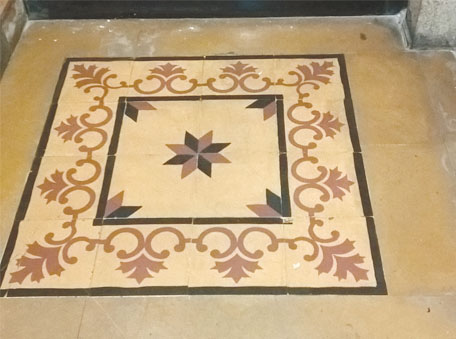
“When we started Bharat Tiles, it was called the Bharat Flooring Tile company,” says Dilnavaz Variava, daughter of Pherozesha Sidhwa, who founded the company, along with his nephew Rustom Sidhwa. “To make tiles of international quality in India as part of the Swadeshi movement, the person who inspired my father was Jamshed Nuasserwanji Mehta, a friend of Mahatma Gandhi and a great patriot and philanthropist. Later, he became the first mayor of Karachi and remained so for 12 years. He is acknowledged as the maker of modern Karachi. He inspired my father and my cousin Rustom Sidhwa to start a cement tile company in India to beat the imports. He was their mentor and partner in those days. So, my father and my cousin borrowed money, launched a company and adopted the motto ‘Equal to the world’s best’. That motto we retain to date.”
Uran and its link to the iconic Readymoney Mansion
Sunny or foggy, Uran is clearly visible on the distant horizon, when, standing at the Gateway of India one gazes across the expanse of the Arabian Sea eastwards. Sharing the fate of many territories, it was passed on from one ruling dynasty to the next until it came to rest in the possession of the British.
The Sidhwa family owned large sheds at Uran, once used to manufacture local liquor. A prohibition order killed the activity. The sheds lay idle. The Sidhwas decided to put their idle sheds to good use and set up their tile production unit at Uran, giving the Swadeshi movement impetus, and India its first indigenous cement tile plant in the year 1922. This, at a time when there was no electricity, no water and certainly no telephone connections at Uran. The only connects from the island to the mainland were the fishing boats that plied to and fro in fair weather. Batches of finished tiles commenced their journey from the makeshift jetty at Uran in fishing boats, perhaps with some fish for company, and crossed the sea to find their final destination in other parts of India.
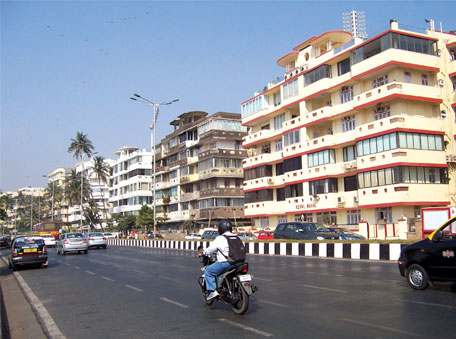
Later, he travelled to Europe to find a remedy for the flaw and was told that his tiles were perfect. Only the polishing needed improvement. Of the fresh batch of tiles then made, some are still to be seen in parts of this building, even after 90 years!
“Our Readymoney Mansion at Flora Fountain was constructed in the 1920s by my great grandfather, the late Sir Cowasji Jehangir. Not only are the tiles still existing and in excellent condition, but are much admired by us, by many of our tenants and by visitors to the building even today,” says Jehangir H.C. Jehangir of this building.
Now swamped by buildings and shops alongside, Readymoney Mansion must once have been a commanding edifice, when standing in solitary splendour. Peering through the tree-tops, I located the crest of Cowasji Jehangir in stone above the entrance and stepping within, once again halted before laying foot on the floor art. A star-spangled carpet design unrolled across the passage all the way to the foot of the stairs. By the foot of the stairs is a single motif, reminiscent of the auspicious rangoli found at the entrance of most Indian homes.

The 1930s ushered in the Art Deco phase of architecture and design. Says the late historian Sharda Dwivedi in her book Bombay Deco, “Built between 1930 and 1947 and now largely forgotten, these buildings were more than concrete and steel, more than housing and stone and cinemas. They were dramatic harbingers of India’s future as an independent democracy.”
The trailblazing Art Deco buildings of Mumbai
Art Deco arrived in India, literally on the shores of Bombay, spurred by the great reclamations in the island city and frantic building activity that was taking place in the 1930s.
Hollywood barged into our lives with great flourish along with the theatres, the real trailblazers of the Art Deco movement in Bombay. Regal Cinema led the way and was formally inaugurated on 14 October1933. It was followed by the Plaza in Dadar, in 1935, The New Empire theatre on 3 September 1937; and reached its zenith in the Art Deco style with the Eros theatre at Churchgate that opened in February, 1938. Bombay possessed an astounding 300 cinema theatres by 1939.
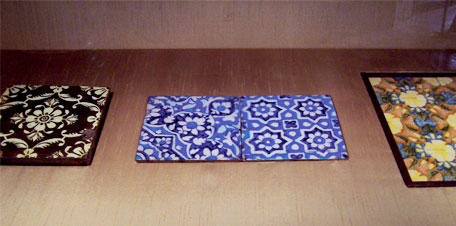
Says Sharda Dwivedi, “In the decade when Art Deco arrived in Bombay, although companies like Rawal Tiles imported from countries like Italy, Bharat Tiles provided most of the requirements of tiling in the new buildings. These included many of the Deco cinemas and buildings along the Oval, Marine Drive, Cumballa and Malabar Hills. The largest order came from Raja Dhanrajgiri for the Dhanraj Mahal complex at Apollo Bunder. As a result of Bharat Tile’s focus on quality, the tiling in many of the Art Deco apartments of the 1930s has endured.”
Good times were followed by difficult ones. The British dragged India into its war against Hitler in 1940. As World War II picked up momentum, the British Government diverted cement to defense installations. The tile business suddenly came to a halt.
The uniqueness of Bharat Tiles
Uniqueness has always been their strength. A report of the Deputy Chief Engineer of the Bombay Port Trust, before the Bombay Engineering Congress in 1933 comments on the paving of 40,000 square feet of Ballard Pier Station. “The platforms are paved with cement tiles of a special non-slip chequer pattern….. it was thought that the light grey and cream tiles might in a short time be spoiled with betal nut juice, but exhaustive tests on sample tiles indicated that the surface was so dense that the stain would not penetrate….This in practice has proved correct. The tiles have been laid 12 months and there is no sign of staining. The whole platform is washed periodically and this removes the dried up juice without leaving any mark.”
Another important historical building, whose entrance has been re-tiled by Bharat Tiles using their Heritage tiles, is the Dr. Bhau Daji Lad Muesum, at Byculla. The oldest museum in Bombay, it was built by funds from prominent Indians like Bhau Daji Lad, Jagannath Shunkerseth and Jamsetjee Jeejeebhoy in 1862, and opened to public in 1872 as the Victoria and Albert Museum. It was later renamed as Bhau Daji Lad. Among its treasures are also ancient tiles, gazing at the viewer through their glass case! Walk into any building along the Marine Drive or the Oval Maidan and one is in the Art Deco precinct, where it is still possible to find original floors in some of the homes and in the foyer areas. As Dwivedi points out, “Unless an undiscerning person has uprooted them to be replaced by marble, original Bharat Tiles, still pristine, will be there.”
All of the old clubs, The Willingdon, Bombay Gymkhana, The Royal Bombay Yatch Club, Brabourne Stadium and a host of other clubs, places that we frequent everyday, but seldom bother to notice, have elegant floors laid by Bharat Tiles way back in the mid-20th century.
In Mumbai, where the population of Parsis is the largest, several fire-temples or agyaris were built in the early 1900s. Almost all the agyaris and residential Baugs have Bharat tiles because, at the time, no competition existed. Bharat tiles found their way to the Panchgani agyari and several other distant places. After art deco, it went to plain mosaics. “After which,” says Dilnavaz, “the fad shifted to ceramics and marble, but that too has worn off. People are fed up of these floors, because every house looks like every other house; there is no character to it. Some interior designers find it convenient to put a plain floor and pep up the room with a few curtains and matching upholstery. It saves them the time from working on a personalised ambience. But some really do want to create something unique. Then they come to us. because the options we offer are immense. The permutations and combinations that can be achieved are mind boggling. We can help a designer create any kind of ambience desired. You can have personalised options with colour and designs and in India, fortunately, we can still afford the luxury of a custom designed work of floor art!”
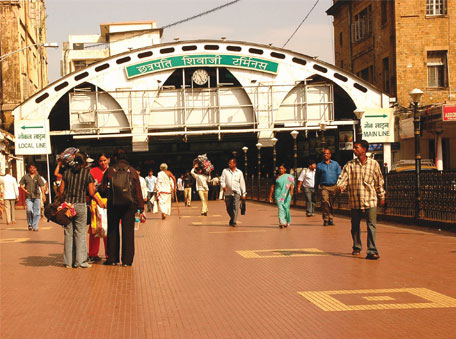
Bringing the company in line with the more modern and contemporary trends of living is Firdaus Variava, Dilnavaz’s son and Vice Chairman of the company. “My son’s tastes are quite different,” she smiles. “He creates modern, funky styles for the younger generation! I have retired. Now the company is his baby.”
The magic of floor art
(As narrated by Dilnavaz Variava of Bharat Tiles)
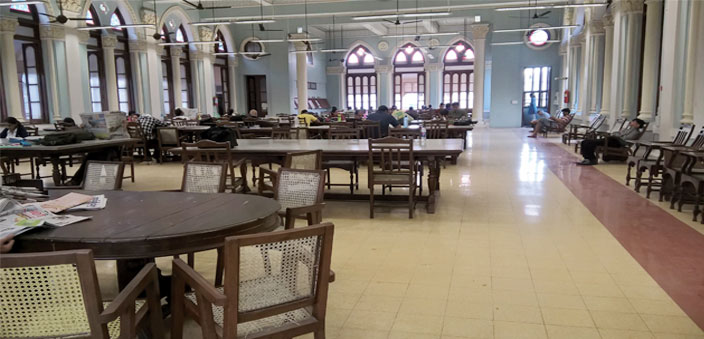
Basically, we have been into floor art ever since our inception, until now: That is, to create very beautiful floors; floors that reflect an individual’s personality and create the ambience that the individual wants either in a home, in a club, in a hotel or an office.
We give them the design or help to create one. We have always had a design department and the design department works with the client or their interior designer to find out what is most appealing for that particular space and that particular client’s needs. So, it could be that some people like a particular colour or want a specific pattern; maybe a combination of styles; sometimes, the reality is working not just with the individual, but with the entire family, because different people have different tastes. The floor is something that everybody will be living with for many, many years. We try and help them to find the kind of floor that will best reflect their own particular desire. Their dream of what their home or office should look like.
So, within this ambit lies a whole range of options available to the user, because this is the oldest tile company in India; probably one of the oldest in the world now! Everywhere I have visited across the globe, just one or two of the tile manufacturing factories now remain, and most of them are not quite as old as we are. So, we are now covering over 90 years of the full gamut of floorings from Victorian and Edwardian tiles – what we call the Raj tiles, which we have named the Heritage® range – to the ultra modern designs created by us.
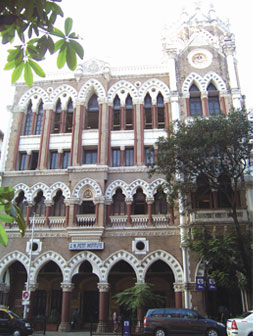
Several iconic buildings still sport the original tiles laid by Bharat Tiles. Among the most outstanding is the J.N. Petit Institute – an incomparable Neo Gothic structure built in 1898 and extended in 1939. The extension accounts for the different floorings laid in different parts of the building. Bharat Tiles grace the floor of the librarian’s room and extend the length of the floor in a bright star pattern. The vast reading room above the library is floored with simple mosaic in contrasting colours. Spikes of light pouring in through the stained glass windows further enhance the sheen of the tiles, creating a soothing ambience for young scholars.
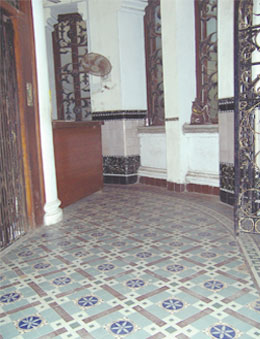
“We have to move ahead and be with the times” says Firdaus modestly. “People keep looking for new innovations for changing conditions of space now. We have to provide them with their requirements”. He has engaged design artists from various parts of the world and created a brand of designer tiles. The company has garnered national and international awards and accolades. Firdaus has brought in innovation without acrimony and as one of their oldest hands, Rumi, says admiringly of him, “He is doing really well. We are looking at a lot of new products without any compromise on quality, and some very different services that no other company can match”.
“Confident that we can convert any motif given to us into a tile, we offer a unique service given by no other company”, is what they all say. A client can give them a pattern or motif of his/her choice and have it converted to a tile that will adorn his/her floor. This engages the client in a most unusual way to participate and be creative, allowing them the satisfaction of being the designer of their own space.
The pictures or drawings of the designs developed are converted into the actual tiles. Samples are occasionally made for approval, pretty much like one would submit a sample poster to a customer per-production. The client is able to see before his eyes his own dream tile come to life and that certainly adds spice to doing up one’s space. Once approved in every way, the final stage of production is commenced. This is a lengthy process, but the end result is something amazing!
As its centenary year in 2022 approaches, Bharat Tiles is spreading its wings, preparing to soar. Today, a lot of iconic enterprises have folded up in Mumbai. Each day, another old company downing shutters makes the news. It will be hats off indeed for Bharat Tiles when it steps into its centennial year, all guns blazing, still proclaiming ‘Equal to the world’s best’.

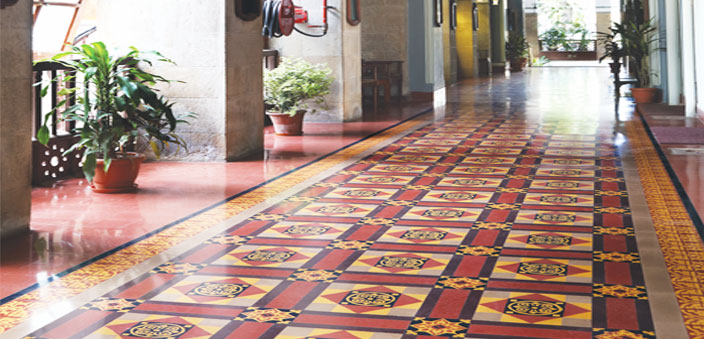
 [/column]
[/column]